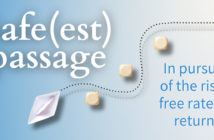How trendsetting owners use finance to their advantage
by Rushi Shah
The commercial real estate industry has come a long way. It has evolved and matured over time, empowered by the ready access to information. Today, it is an impressive $16-trillion marketplace with hospitality assets making up about $2 trillion in valuation (source: NAREIT). This growth has prompted institutional capital to pour funds into the industry. This capital surge has enabled hotel and commercial real estate sponsors and owners to acquire larger assets in bigger markets using relatively fewer of their own investment dollars. Historically, these premium assets were out of reach for everyone except private equity firms and larger institutions. Now, with access to the new dry powder, entrepreneurial owner/operators are able to take advantage of these opportunities and capture significant upside while limiting their downside.
There are a number of ways to leverage this availability of sophisticated capital, each with its own risk and reward. Let’s take a look at some of the most common structures, including limited partnership-general partnership, joint venture partnership, fund, private vs. public real estate investment trusts (REIT), preferred equity or mezzanine debt, and bifurcation of ground lease and leasehold.
LIMITED PARTNERSHIP-GENERAL PARTNERSHIP
LP-GP structure is the most traditional way to use other people’s money to fund a project or acquisition. Under this structure, the general partner (GP) can raise capital for a property purchase from anyone who is interested in taking advantage of the potential upside as a limited partner. As limited partners, these persons do not have decision-making power and their liability does not extend beyond the amount of capital they invested. Unlike the GP, they do not sign on the loan as guarantors and do not need to provide any type of contingent liability to the lender or any other party. Likewise, they do not have any legal liability from the operations of the asset. In exchange for bearing the largest share of the risk, the GP typically receives an additional return on his or her invested capital in the form of a Promote. This type of fundraising structure is straightforward and can usually be put in place through a private placement memorandum or PPM.
JOINT VENTURE PARTNERSHIP
A joint venture partnership structure is similar to a LP-GP, except the limited partner is typically one institutional investor instead of multiple individual investors. The institutional investor will also usually provide help with the financing guaranty, as well as carry some legal and operational liability. Joint venture investors look for opportunities that will deliver a mid-level, double-digit internal rate of return or IRR. IRR is the measure of annualized returns achieved over a period of time. JV partners will also likely dip into the sponsor’s share of return. To be joint-venture worthy, assets should be located in major markets with captive demand drivers and significant upside.
FUNDS
Many savvy entrepreneurs leverage their capital and track records to raise a fund to take advantage of bigger investment opportunities. A successful owner/operator will first need to establish an infrastructure for managing and investing as a fund, identify the target asset types and markets, and define a capital deployment strategy to purchase those assets. Then the fund will need to raise between $50 million and $250 million in capital. The fund manager generally charges a management fee of 2 percent on assets under management, and 20 percent of all profits above an 8-percent return are returned to the investor. This structure allows for a more permanent availability of capital and also affords the fund manager some discretion over how he or she deploys the capital. Because of the start-up costs to create the required infrastructure, a fund strategy can be more expensive to implement than other structures and carries some execution risk in case the fund manager is unsuccessful in raising necessary capital.
REAL ESTATE INVESTMENT TRUSTS (REIT)
Public markets have always been a sought-after venue in which to raise permanent capital. One way sophisticated borrowers can take advantage of public markets is to create a REIT. Under a REIT structure in the U.S., 90 percent of the net income is required to be distributed back to the investors in the form of dividends. There are two flavors of REIT: public and private. Both types raise money from investors, but a public REIT is listed on the market and a private REIT is not. A REIT is the most expensive way to raise capital because it typically involves a banker and legal costs are high. As a general rule of thumb, in order to make economic sense, a REIT must raise $100 million or more. A typical REIT yields about 8 percent of the book value to its investors.
PREFERRED EQUITY OR MEZZANINE DEBT
Both preferred equity and mezzanine debt often are the go-to when owners are looking to acquire an asset using higher leverage than traditional financing. Owners may be able to capitalize up to 85 percent of the total capital required for the purchase. In exchange for allowing the higher leverage, the preferred equity or mezzanine debt investor will demand at least low, double-digit returns. Investors that deal in this layer of the capital stack typically prefer larger, well-branded assets in major metro areas. In most cases, mezzanine debt needs to be approved by the senior lender. As a result, Wall Street tends to prefer preferred equity over a mezzanine loan because the senior lender has less say over a preferred-equity investor than over a mezzanine-debt investor.
GROUND LEASE BIFURCATION
Ground lease bifurcation is one of the newest and best ways to own assets with less skin in the game. By closing two loans on the same asset, one on the land (the leased-fee entity) and one on the building and operations (the leasehold entity), a lender can isolate the higher risk of the operating business and more accurately calculate the land’s valuation. This arbitrage allows an owner to achieve higher levels of leverage because Wall Street prefers to offer the senior loan on the less-risky land since the loan sits at the top of the capital stack for repayment. This security results in more attractive terms and higher leverage for borrowers. There are also pockets of capital available for the lease-hold financing for better assets.
TAKING ADVANTAGE OF STRUCTURED FINANCE TRENDS
Trendsetter owners who want to take advantage of these capital structures should always keep in mind that there is no free lunch within the market. There is always a tradeoff between risk and reward. If you are making a profit using investors’ capital, inevitably you will have to share the upside. Limiting the amount of upside you share is possible, but in exchange the amount of leverage you achieve is also likely to be limited. Each structure has repercussions when it’s time to recapitalize or refinance, so it is critical to examine all possible exit scenarios and determine how they align with your business goals. To find the optimal structure and avoid unnecessary hiccups, it’s smart to work with an expert intermediary who has done it before.
 Rushi Shah is principal and CEO of the commercial mortgage and real estate investment banking firm and AAHOA Club Blue Member Mag Mile Capital. As a leader in hospitality financing, Shah specializes in structuring and placing high-leverage, non-recourse bridge and permanent debt with cash out for full- and limited-service hotels nationwide. Since joining the firm’s predecessor, Aries Capital, in 2015, Shah has structured and closed hundreds of millions in financing for all property types. Shah has held previous positions at Northern Trust and has an MBA from the University of Chicago’s Booth School of Business.
Rushi Shah is principal and CEO of the commercial mortgage and real estate investment banking firm and AAHOA Club Blue Member Mag Mile Capital. As a leader in hospitality financing, Shah specializes in structuring and placing high-leverage, non-recourse bridge and permanent debt with cash out for full- and limited-service hotels nationwide. Since joining the firm’s predecessor, Aries Capital, in 2015, Shah has structured and closed hundreds of millions in financing for all property types. Shah has held previous positions at Northern Trust and has an MBA from the University of Chicago’s Booth School of Business.




